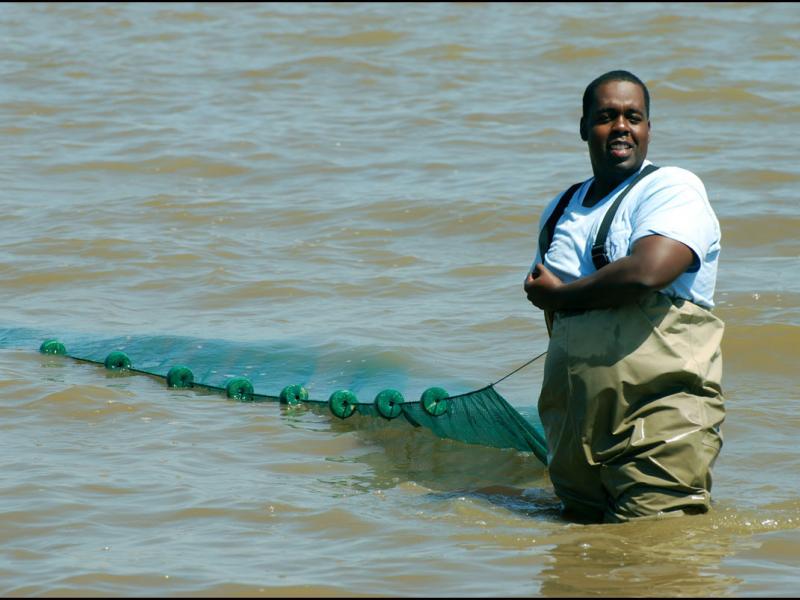The shoreline sampling program utilizes seines and beam plankton trawls to collect samples useful for marsh edge and sandy shoreline habitat assessment as well as quantitative, early life-history assessments of finfish, shrimp, and crabs. Shoreline sampling became a component of FAMP in February 1982 (see Sample Processing), but the inception of seine and beam plankton trawl sample data began in 1977. During the 1990s and early 2000s, supplemental beam plankton trawl samples were collect weekly during the larval brown shrimp recruitment season (February, March, April, and May) to monitor the abundance and temporal distribution of larval brown shrimp entering the Mobile Bay and Mississippi Sound estuaries. However, these weekly supplemental samples were excluded from the Shoreline Program in favor of higher resolution community assemblage data.
A 50' seine with 3/16" mesh and a 1.5-meter beam plankton trawl with 500-μm mesh are used to collect Shoreline samples. Seine samples are collected 60' seaward of the shoreline and the seine is pulled onto the beach/marsh while capturing small organisms (finfish, shrimp, crabs, and mollusks) utilizing the shoreline habitat. The beam plankton trawl is pulled a distance of 426' parallel to the shoreline, and captures larval organisms adjacent to the shoreline habitats. Eleven seine and beam plankton trawl samples are collected throughout the Mississippi Sound, Mobile Bay, Perdido/Wolf Bay, Little lagoon, as well as Alabama's territorial sea each month.

For more information regarding shoreline sampling, contact Craig Newton.







